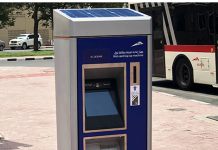Dubai: If you’re thinking of changing your car tyres before the summer begins, make sure the new set has a manufacturing date that is not more than 150 days old.
The Roads and Transport Authority (RTA) stipulates that the validity of a car tyre is five years from its date of manufacturing irrespective of use.
Many residents have fallen into the scam of buying brand new tyres with an old manufacturing date, resulting in a ‘fail’ at the RTA vehicle registration renewal test.
“Drivers must look at the manufacturing date when buying tyres, which can be found in the inner edge of a tyre and consists of the month and year the tyre was produced. They should consider buying branded tyres to avoid any issues,” he said.
Rotate tyres every 30,000 kilometres, and changing them every 100,000 kilometres.
The sole contact between the car and the road is a patch of tyre the size of a palm.
Only if motorists fully trust their tyres can they rely on their cars to go, turn and stop as they expect. Today’s ever-changing driving environment poses a constantly evolving challenge for Bridgestone and its products.
Considering how important tyres are for a smooth and safe drive, it is surprising just how quick and it is easy to care for your tyres. By following our tyre care tips, and conducting simple regular checks, you will not just save time and money, but more importantly, stay safe on the road

Do a daily visual check
Check that all tyres have about the same inflation pressure.
Check the sidewalls for cracks or unusual bulges.
Check for and remove any foreign objects (e.g. stones or nails) that could puncture you tyre.
Do a monthly tyre pressure check
Use a proper tyre guage to measure tyre pressure.
Check pressure and inflate only when the tyres are cold. (a hot tyre will show inaccurate reading due to inflation)
It takes as long as 4 hours for a tyre to cool down so it’s best to check tyre pressure first thing in the morning.
Your vehicle tyre pressure chart can usually be found on the driver’s door frame or in your owner’s handbook.
Don’t forget to also inflate your spare tyre.
Check for irregular wear
This is when one section of the tyre is more worn than the rest and occurs when:
Tyres are not uniformly inflated.
Tyres are not balanced.
Wheels are out of alignment.
Rotate tyres every 8,000 – 10,000 km
Visit a reputable tyre shop or garage for tyre rotation.
Check your owner’s handbook for rotating sequence.
Have your tyres balanced at the same time.
Check the tread depth indicator
All tyres come with a tread depth indicator. (see diagram)
When the indicator is flushed with the rest of the tread (usually about 1.6mm), it is time to change the tyre.
Check the wheel alignment
Misaligned wheels cause tyres to wear more quickly and irregularly, and prevents the vehicle from running or braking in a straight line. The suspension and steering components will also be subjected to extra stress.
It is a good idea to have your wheels aligned by a computerised alignment machine. A reputable workshop should have the wheel alignment specifications of your vehicle model.




















